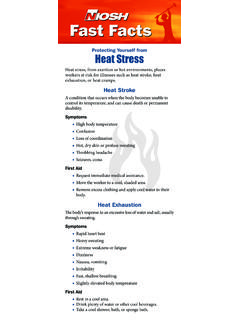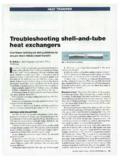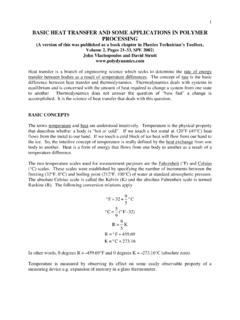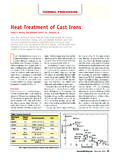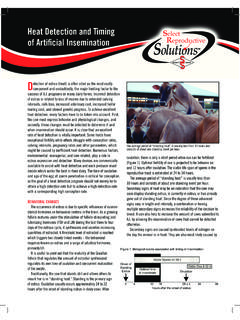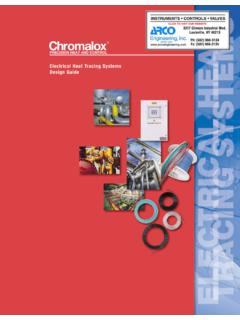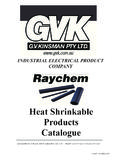Transcription of Heat Resistant Castings-Iron Base Alloys
1 Acme Alloys | Technical Literature | heat Resistant Castings iron base Alloys Page 1 of 9. Tel: +91-11-513 3021, 514 3474 | Fax: +91-11-540 5799, 514 6900. e-mail: | Web: heat Resistant Castings-Iron base Alloys Castings are classified as heat Resistant if they are capable of sustained operation while exposed, either continuously or intermittently to operating temperatures that result in metal temperature in excess of 650 C (1200 F). Alloys used in castings for such applications fall into four broad categories. A number of proprietary Alloys viz. AiResist, Haynes, Inconel, Rene, Udimet, Hastelloy, MAR-M, RA-330, Nimonic and many other Alloys developed by companies viz.
2 Inco Alloys , Rolled Alloys , Carpenter Alloys , Krupp VDM, also fall within the four categories mentioned below: The discussion in this technical paper is restricted to iron - base Alloys . 1. iron - base heat Resistant Alloys Straight Chromium Alloys -HA, HC, HD. iron -Chromium-Nickel (Fe-Cr-Ni) Alloys -HE, HF, HH-I, HH-II, HP-50WZ, HK, HK-30, HK- 40, HK-50, HL. iron -Nickel-Chromium (Fe-Ni-Cr) Alloys -HN, HP, HT, HU, HW, HX. 2. Nickel- base heat Resistant Alloys 3. Cobalt- base heat Resistant Alloys 4. Super Alloys iron base super Alloys Nickel base super Alloys Cobalt base super Alloys Table 1 shows the representative ASTM/ ACI compositions of iron - base heat Resistant casting Alloys .
3 Other alloy standards DIN (Germany), BS ( ), ISO have their corresponding counterparts of heat resisting Alloys designated to their respective standards but have inherently similar elemental chemical composition ranges. ASTM/ ACI standards are referred here, as they are the most popular and widely accepted materials & alloy standards across the world. Acme Alloys manufactures its own proprietary Alloys and proprietary Alloys that are developed by companies, to meet a particular industry application or for superior performance in specific environments compared to generally available standard Alloys . Table 1: Composition of heat resisting iron base Alloys ACI ASTM Carbon (C) % Chromium (Cr) % Nickel (Ni) % Silicon Designation Specifications (Si)%.
4 Straight-Cr Alloys HA A 217 - HC A 297, A 608 HD A 297, A 608 Fe-Cr-Ni Alloys HE A 297, A 608 HF A 297, A 608 HH A 297, A 608, A 447 HI A 297, A 567, A 608 HK A 297, A 351, A 567, A 608. HK-30 A 351 HK-40 A 351 HL A 297, A 608 Fe-Ni-Cr Alloys Engineered casting Solutions Since 19 8 0. Acme Alloys | Technical Literature | heat Resistant Castings iron base Alloys Page 2 of 9. Tel: +91-11-513 3021, 514 3474 | Fax: +91-11-540 5799, 514 6900. e-mail: | Web: HN A 297, A 608 HP A 297 HP-50WZ HT A 297, A 351, A 567, A 608. HT-30 A 351 HU A 297, A 608 HW A 297, A 608 HX A 297, A 608 . American Society of Testing Materials (ASTM) specifications are the same as Alloy casting Institute (ACI).
5 Specifications. Remainder is Fe in all alloy compositions. Mo, Al, Ti, W, V, Nb, Cb, B, and Ta are added intentionally, in appropriate proportions as trace elements for achieving enhanced physical properties and superior, stable grain microstructure. Properties of heat Resistant Alloys In application of heat Resistant Alloys , paramount considerations include Resistance to corrosion at elevated temperatures Stability (resistance to warping, cracking or thermal fatigue). Creep strength (resistance to plastic flow). Elevated-Temperature Tensile Properties The short-term elevated-temperature test, in the standard tension test bar is heated to a designated uniform temperature and then strained to fracture at a standard rate, identifies the stress due to a short- term overload that will cause fracture in uni-axial loading.
6 Creep and Stress Rupture Properties Creep is defined as the time-dependent strain that occurs under load at elevated temperature and is operative in most applications of heat - Resistant high-alloy castings at the normal service temperatures. In time, creep may lead to excessive deformation and even fracture at stresses considerably below those determined in room temperature and elevated-temperature short-term tension tests. When the rate or degree of deformation is the limiting factor, the design stress is based on the minimum creep rate and design life after allowing for initial transient creep. The stress that produces a specified minimum creep rate of an alloy or a specified amount of creep deformation in a given time (for example, 1% of total 100,000 h) is referred to as the limiting creep strength, or limiting stress.
7 Stress rupture testing is a valuable adjunct to creep testing and is used to select the section sizes necessary to prevent creep rupture of a component. It should be noted that the long-term creep and stress-rupture values (For example, 100,000 h) are often extrapolated from short-term tests. Whether these property values are extrapolated or determined directly often has little bearing on the operating life of high-temperature parts. The actual material behaviour is often difficult to predict accurately because of the complexity of the service stresses, different applications, relative to the idealized, uni- axial loading conditions in the standard tests, and because of the attenuating factors such as cyclic loading, temperature fluctuations, and metal loss from corrosion.
8 The designer and the metallurgist should anticipate the synergistic effect of these variables. Engineered casting Solutions Since 19 8 0. Acme Alloys | Technical Literature | heat Resistant Castings iron base Alloys Page 3 of 9. Tel: +91-11-513 3021, 514 3474 | Fax: +91-11-540 5799, 514 6900. e-mail: | Web: Table 2 shows typical room-temperature properties of as-cast heat -resisting casting Alloys Alloy Tensile Tensile Yield Yield Elongation Hardness Strength Strength Strength Strength Brinell MPa ksi % HB. MPa ksi HC 760 110 515 75 19 223. HD 585 85 330 48 16 90. HE 655 95 310 45 20 200. HF 635 92 310 45 38 165.
9 HH 1 585 85 345 50 25 185. HH 2 550 80 275 40 15 180. HI 550 80 310 45 12 180. HK 515 75 345 50 17 170. HL 565 82 360 52 19 192. HN 470 68 260 38 13 160. HP 490 71 275 40 11 170. HT 485 70 275 40 10 180. HU 485 70 275 40 9 170. HW 470 68 250 36 4 185. HX 450 65 250 36 9 176. Thermal Fatigue Thermal fatigue involves cracking caused by heating and cooling cycles. Very little experimental thermal fatigue information is available on which to base a comparison of the various Alloys , and no standard test to date has been adopted. Field and industry experience indicates resistance to thermal fatigue is usually improved with an increase in nickel content.
10 Niobium/Columbium-modified Alloys have been employed successfully when a high degree of thermal fatigue resistance is desired, such as in glass forming and reformer outlet headers, where rapid heating and cooling takes place of the parts. Thermal Shock Resistance Thermal shock failure may occur as result of a single, rapid temperature or as result of rapid cyclic temperatures changes that induce stresses high enough to cause failure. Thermal shock resistance is influenced by the coefficient of thermal expansion and the thermal conductivity of materials. Increases in the thermal expansion coefficient or decreases in the thermal conductivity reduce the resistance against thermal shock.
